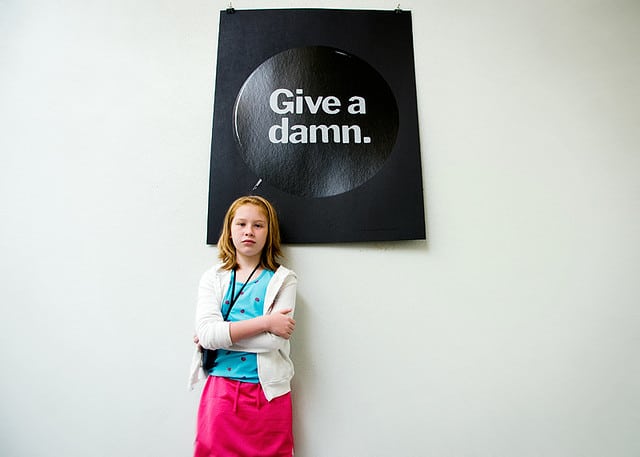Blog smarter, not harder. Shareaholic does it all, for free.
What does it take to create a successful blog?
If you want the honest truth: It takes a lot. While “content is king” is an oft-quoted rule, it takes much more than good writing to create content that encourages and increases audience engagement.
Anyone who spend hours slaving over a carefully worded post or conducted extensive research to back up their points, only to be greeted with cricket sounds after they hit the publish button, can attest to this. Good content serves as a starting line and you must meet many other requirements before you hit the finish line where your engaged audience waits for you.

How do we, as content creators, avoid sending our hard work and beautifully crafted content out to an audience who fails to respond? How can we increase our audience engagement?
Start with these 4 ways to promote and foster discussion, social sharing, and conversations around your writing:
1. Offer Serious Value
Not sure where to start with your blog content? Follow one, simple rule: Help other people.
You can do this by creating valuable content. Valuable content is anything that makes a positive impact in someone else’s life.
This is a list of actionable tips, an ebook that explains a complicated subject in an easy-to-understand way, or a podcast that features uplifting messages of hope for those who need to hear it.
Valuable content can be anything so long as it helps your audience. That makes it difficult to define because that means what offers serious value will depend on the people that comprise your own audience.
Still, we can break it down to what all valuable content shares in common on a fundamental level to help you identify it. Valuable content:
- Provides something useful or functional for readers. It shows them how to do something or suggests an answer to a question.
- Offers insights that readers can apply to their own lives for clarity or solutions to problems.
- Compels a reader through a strong, unique and genuine voice.
- Speaks directly to a specific person.
- Demonstrates the writer is an authority in their niche.
And on the flip side, valuable content is not:
- Common information that anyone with access to Google could find on their own.
- Tips that only repeat what another well-known authority in your niche says (for example, think “the latte factor” money-saving tip in personal finance circles).
- Fluff without meaning, purpose or function.
2. Serve Your Reader (Not Yourself)
If your audience is not currently engaged, ask yourself a few questions about the content you create. What purpose does it serve? Why do you write it?
If your answers do not align with what your readers want or need, you will never fully capture their attention. Yes, it is your blog, your business, your website. But that means nothing without an audience supporting you.
This is a difficult concept for many bloggers. Aren’t you here to serve yourself? Isn’t your blog meant to provide you with some sort of outlet, be it creative or financial?
The answer is yes, but your readers still come first. Your content must respect who they are, what they want, and the stories and ideas they want to talk about, read and share.

Serving your reader does not mean you avoid writing in your own voice or from your own perspective. These are both key elements to creating a successful piece of content that people appreciate.
Said another way, your copy should be true to who you are (or what your business is) without always being all about you.
Do not stop sharing your experiences, stories, ideas, and thoughts. These lend personality and spark to your content, but package them correctly and deliver them in a way that is meaningful for your reader.
3. Create Content Worth Sharing
“Duh,” you may be thinking. And I get it — this does sound painfully obvious, doesn’t it? If you want to increase audience engagement, you should create engaging content.
But it is much easier said in theory than done in practice.
With more and more individuals and businesses entering the blogosphere, “good” content is no longer good enough. Your content must:
- Provoke thoughtful questions.
- Encourage interested discussion.
- Provide intense happiness.
- Offer solutions to complicated problems.
It cannot simply sit there and be reasonable, nice advice or an accurate commentary on something specific. The things you produce must invoke an emotional response within the members of your audience if you want to see them take the action required to engage with you and your blog.
That’s the biggest difference between good content and engaging content. Your audience may enjoy good content. It may leave them with a smile or have them nodding along in agreement.
But that’s as much effort as they’ll put into expressing interest in what you’ve created for them. There are too many distractions — too much other content to consume — for them to spend time interacting with a piece beyond these simple gestures that no one else will see or know.
Engaging content, on the other hand, illicit a response. Your audience won’t be able to help themselves; they’ll feel so strongly one way or another about your writing that they’ll be encouraged to take the time and effort to formulate a reply. Or they’ll feel compelled to make sure other people see what they’ve seen. Or they’ll quickly sign up for your email newsletter because your message resonated on a deep level.
4. Make It Easy for Your Audience
Your audience may love to connect with you, share your content and jump into the conversation. But they won’t do any of the above if you make it difficult for them to do so.
Spending too much time on the content creation side of things makes it easy to forget what life is like on the content consumption side. Avoid this pitfall by empathizing with your audience. Understand what they see as visitors to your site, and make their user experience seamless and hassle-free.
Don’t worry. Making this happen — which makes it easy for your audience to engage with what you provide for them — won’t require too much work on your end. After all, there’s a plugin for that.
Seriously. There’s a simple plugin for every step of the engagement process.
Instead of trying to squeeze readers into a sales funnel they’re not ready to join by making them uncheck boxes that would automatically sign them up for emails they don’t want, use a non-obtrusive email address collection plugin. (Personally, I like HelloBar.)
Instead of requiring your readers to prove they aren’t evil robots by forcing them to enter Captcha codes, use an anti-spam plugin to catch questionable comments.
Instead of expecting them to jump from your post to their favorite social media sites, use a plugin that allows for social sharing right at the bottom of the text. (I think I know one that may work well for you…)
A user frustrated by pop-ups, sneaky email sign-up tactics, complicated comment forms, and lack of direction on where and how they can share the post that they liked so much is a user who won’t engage with you. They won’t comment on your material if they don’t know how, and they certainly won’t go the extra mile of sharing what you say with their own circles.
If you’ve already offered valuable, interesting content that serves your reader, don’t trip yourself up right here at the end. Finish strong and encourage audience engagement by making it easy, simple, and intuitive for those who want to join in on the community you want to foster.
Kali Hawlk is a writer and content manager who specializes in helping financial businesses. She’s a member of the Heroic Search content team and authors Common Sense Millennial. You can connect with her by tweeting @KaliHawlk.
Wanna work with us? Join Shareaholic.
